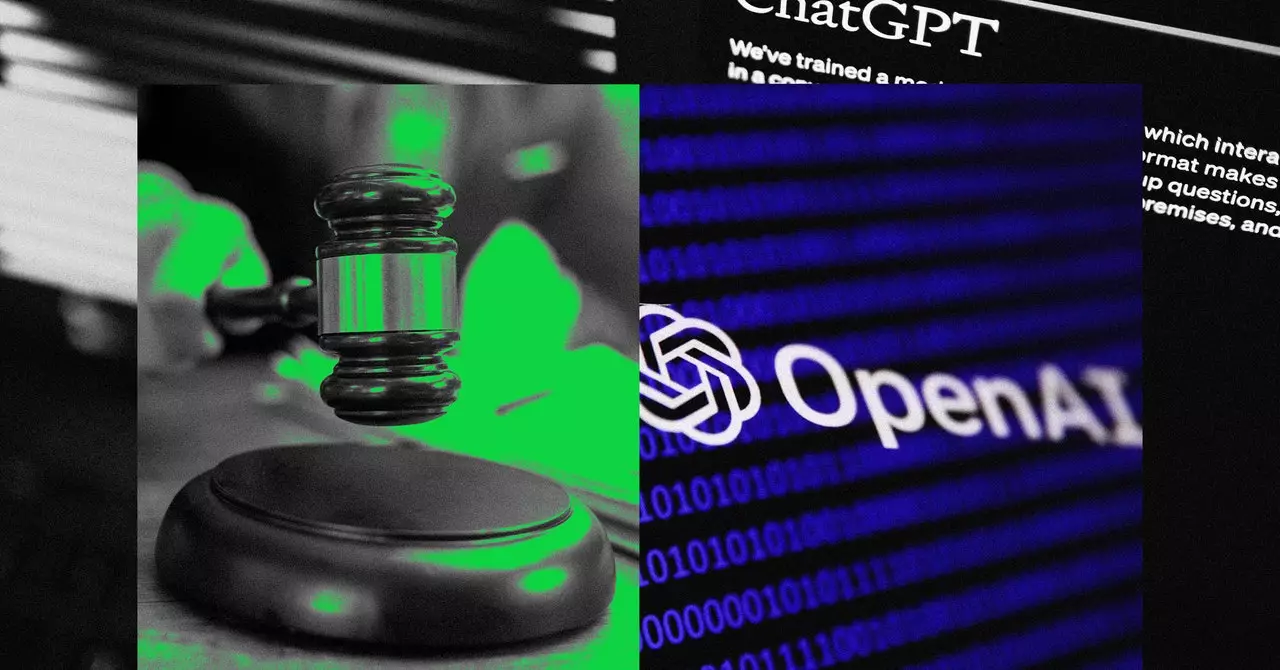As artificial intelligence continues to evolve and permeate various sectors, legal frameworks surrounding innovations like OpenAI’s ChatGPT face challenging scrutiny. This is more than simply a legal tangle; it highlights fundamental questions regarding ownership, accountability, and the intersection of technology and copyright. Recent court rulings and the positions of various legal experts shed light on the complexities and nuances inherent in this legal battleground.
In ongoing courtroom disputes, particularly those involving AI companies such as OpenAI, many publishers have attempted to assert their rights through Digital Millennium Copyright Act (DMCA) claims. These claims allege that AI technologies utilize copyrighted materials without permission, thereby infringing the rights of original creators. The legal motions filed by healthily skeptical parties underline the pressing need for evidence substantiating these claims. Critics like Matthew Sag, an authority on artificial intelligence law, argue that the evidence presented by publishers often lacks the rigor expected in such serious allegations. He notes that without robust examples demonstrating the direct infringement of copyrighted content, the case for DMCA violations stands on shaky ground. This notion begs the question: what constitutes sufficient evidence in the age of AI?
The Challenge of Proving Infringement
Ann G. Fort, a notable figure in intellectual property law, emphasizes that publishers aiming to challenge AI models must provide explicit examples showcasing how outputs resemble their copyrighted works. This raises the stakes for these entities as they attempt to navigate the complex matrix of copyright law and AI capabilities. How can publishers conclusively prove that their materials were employed to generate ChatGPT’s responses? What constitutes a compelling comparison? The lack of clear and tangible outputs from AI systems makes it a significant hurdle for the claimants.
The different trajectories of cases under the DMCA against AI platforms paint a broader picture of the uncertainty embedding these legal disputes. In another instance, The Intercept’s case against OpenAI thrived on the submission of an extended complaint comprising 600 pages of illustrative evidence. This demonstrates a proactive approach that could serve as a roadmap for future litigants. However, it also underscores a prevailing dilemma—what aspects of these cases hold legal merit, and how much is mere speculation?
The recent dismissal of DMCA claims in some cases has instigated discussions surrounding the concept of ‘standing’—the legal ability to bring a lawsuit. Legal experts have argued that these rulings are not simply dismissals of specific instances but may signify a challenge to the very framework of copyright law as it pertains to AI-generated content. James Grimmelmann of Cornell University points out that the implications of a ruling questioning standing extend beyond AI legalities, potentially shaking the foundations of intellectual property protection as we know it. This perspective compels us to examine whether the current frameworks can adequately respond to the rapidly evolving landscape of technology and creativity.
Judge McMahon’s remarks in her recent ruling further underscore the multifaceted nature of these claims. By indicting the underlying grievances of industry plaintiffs—namely, the unremunerated use of their intellectual property for profit by AI firms—her opinion suggests that broader legal theories may be necessary to address these types of grievances. Yet, the challenge remains: what concrete legal theories could effectively encapsulate and address the novel complexities arising from AI?
As innovative technologies like AI either teeter on the edge of legality or plunge into murky waters, it becomes imperative for all stakeholders—creators, companies, and legal professionals alike—to engage in discourse and advocate for tangible solutions. The emerging legal landscape must evolve to facilitate a more harmonious relationship between technological advancement and the rights of creators. This dialogue may necessitate new statutes, refined legal strategies, and a deeper understanding of both creativity and ownership in a digital era.
As the cases continue to unfold, the interactions between copyright law and AI will undoubtedly chart new territories in legal reasoning and implications. The urgency of these discussions signals that a reckoning is on the horizon and that the legal outcomes of these cases may reshape not just the activities of AI companies, but the entire paradigm of intellectual property rights in a world increasingly governed by artificial intelligence tools.

